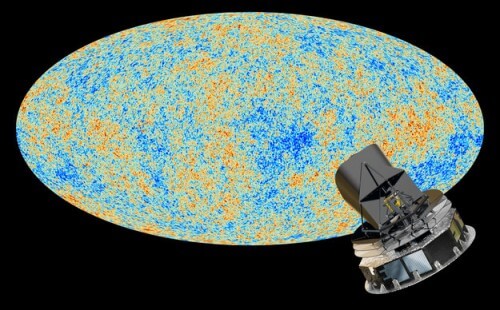The place at the L2 Lagrange point where there is a balance between the gravities of the Sun and the Earth is precious and rare, so the European Space Agency acted to remove it to a safe orbit around the Sun before disabling its instruments

On Wednesday of this week (23/10/2013) the instruments of the Planck European Space Telescope were turned off, the satellite that maps the faint radiation from the Big Bang - the cosmic background radiation in unprecedented detail. Two days earlier he had been ordered to burn his engines to drain his engines of fuel and to ensure that he would end his life in a safe configuration.
One of the two instruments that operated in the Planck space telescope, the HFI instrument - high frequency instrument - ended the supply of liquid helium in January 2012. By then Planck had completed five scans of the whole sky, at high frequency and the additional detector - LFI - at low frequency. Since January 2012, Planck has performed three more scans with just the LFI instrument, allowing scientists to refine their knowledge of the cosmic background radiation. All science activities came to an end on October 3, and the science instruments were turned off on October 19.
In recent weeks, we have been making preparations for the safe retirement of the satellite," says Steve Foley, director of spacecraft operations at the European Space Agency's control center in Darmstadt, Germany. "The preparations included making the spacecraft passive, and firing the engines to aim it so it would go into a 'parking' orbit around the Sun, away from the Earth and Moon system for hundreds of years."
More of the topic in Hayadan:
- An important discovery by Planck: a large concentration of dark energy at the beginning of the universe is responsible for accelerating the expansion of the universe that began 7 billion years ago and is felt today
- Another discovery by Planck: the universe is 100 million years older than we thought until now
This is a process similar to the one that the Herschel spacecraft went through, which was shut down in June of this year. "These two missions of the European Space Agency carried out their missions from a point known as L2, one of the Lagrange points between the Earth and the Sun, where there is an equilibrium between the gravitational forces of the two bodies. This is an extremely limited volume of space, and therefore we had to plan the evacuation of the spaceships from there." says Andreas Rudolph, responsible for astronomical mission operations at ESOC. This step was accomplished through a two-day maneuver, and the spacecraft began to drift away from Earth, a step that was completed with the ignition of the engines and the burning of the remaining fuel this week.
"Our role at ESOC is to keep the missions alive and productive, so sending a shutdown order is a difficult event," said Palo Perry, mission operations manager. "While the end of a successful science mission is always expected when the supply of helium used for cooling is exhausted, we still think it is appropriate that the last command to silence Planck be sent by the science crew and not the flight control personnel." said.
